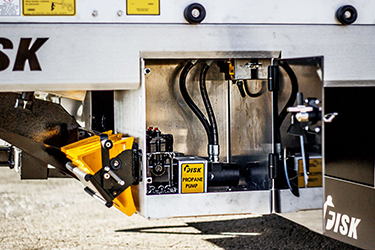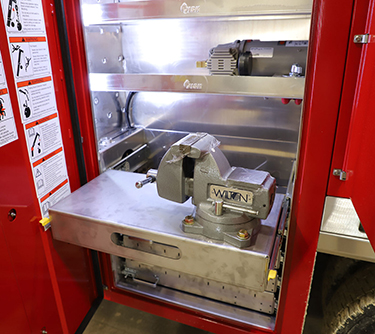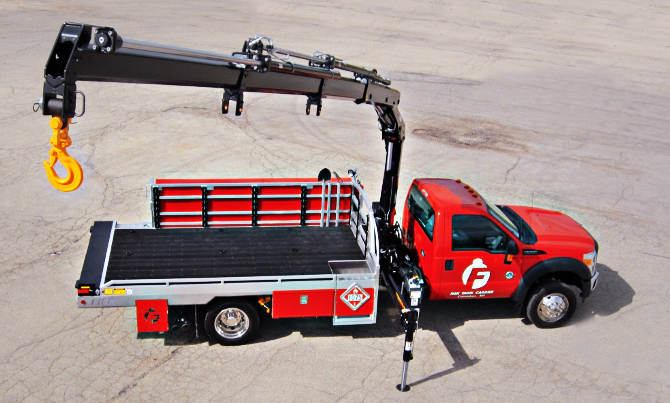 When consumers look for a propane service supplier, the decision is mostly based on price and ready availability. As a company, having a competitive price and flexible scheduling will help you turn inquiries into customers. Careful planning of your truck fleet can ensure that you maximize efficiencies. This will bring financial savings, increased customer acquisition and retention, and can bring profit to your bottom line.
When consumers look for a propane service supplier, the decision is mostly based on price and ready availability. As a company, having a competitive price and flexible scheduling will help you turn inquiries into customers. Careful planning of your truck fleet can ensure that you maximize efficiencies. This will bring financial savings, increased customer acquisition and retention, and can bring profit to your bottom line.
Planning for profit
When planning your fleet, there are many things to consider. Truck maintenance and truck design are two areas where numerous opportunities exist to improve efficiency and money savings. Also, the procedures used by the operator during an installation should be evaluated. Lastly, considerations should be made for the setting environments and consequential truck requirements.
Truck maintenance and design improvements
One area for potential efficiency savings lies with the factors that affect the maintenance of a propane tank installation and service truck. An important factor is the material used to build the truck. Frames and boxes made of aluminum significantly reduce the weight of the truck. This reduced weight brings savings in fuel consumption, as well as increased payload, as you can carry more tanks. Aluminum also will not rust like steel, which increases the longevity and aesthetics of the truck — your moving billboard. Having a gas engine converted to run on propane can also bring additional savings, as it allows you to use your own fuel source. Lastly, in regard to fleet maintenance, you should consider the reliability and availability of the service company used for your cranes.

Underbed storage on a TX-1. (Photo: FISK)
An important factor in improving efficiency is the design of your trucks. A multi-use truck gives more flexibility. For example, a tuck-under lift gate allows trucks to carry smaller motor fuel and barbecue cylinders in addition to residential tanks. A pump on the truck allows transfer of product from one tank to another without calling a bobtail. The type of crane on the truck will be important, as operators are likely to feel more comfortable, and therefore be more efficient, with one over another. One final consideration is whether a ladder or staircase will be more efficient for operators, while also reducing the risk of injuries as they get on and off the bed.
Consider setting processes and environments
Job site process is another factor that affects efficiency. The process should be well thought-out, and a truck should be designed to match it. Instruments and tools, such as the vice and corresponding consumables, should be located on the truck where most beneficial to the operator. It’s also important to consider what type or size of cabinets would work best for an efficient installation process. Labeling boxes and shelves with part numbers and quantities allows the operator to inventory at the end of a workday and re-supply for morning.

Fitting your truck with storage can help operators work more efficiently, as seen in the FISK TX-1. (Photo: FISK)
You should also consider environment at the setting site when planning your fleet efficiency and truck design. A smaller and more narrow truck would suit a metro city environment, whereas ground clearance and crane selection might be more important factors for remote mountainous regions.
The area available for setting tanks may determine crane type. Consider if you want to set tanks in any direction from a truck, or if you need extreme reach toward the rear. A rear camera is a must-have item, as it provides safety assurance and back-up assistance for quickly getting into the desired location. Lastly, lighted boxes and floodlights are a benefit to the operator, improving effectiveness and efficiency in the fall season and on emergency service calls.
When planning your fleet for efficiency, you should also include a focus on trailers. Tank trailers are sometimes the best choice when setting a single tank needs to be done quickly. An operator with a pickup truck and the trailer can install a propane tank cost-effectively. This is particularly useful if the rest of your fleet is scheduled and busy.

The FISK TX-1 with extended crane. (Photo: FISK)
Customizations bring overall efficiency
Many factors determine the efficiency of propane deliveries — and the truck should be at the top of the list. With as much investment as you put into your tank-installation trucks, they should fit your team and process perfectly. The truck should not just be an installation vehicle. It is your mobile warehouse, mobile tool chest and mobile workshop.
Before purchasing a standard truck, consider how a few customizations could make a big difference in performance for your operators. Efficient deliveries mean money and time savings. Design your truck not just for the opportunity you have today, but for the opportunities you want to have in the future.
Learn more about how FISK can build the right custom truck for your fleet at www.fiskinc.net.
Custom-made solutions: Download the case study
Header image provided by City Service Valcon
This page was produced by North Coast Media’s content marketing staff in collaboration with Fisk Tank Carrier. NCM Content Marketing connects marketers to audiences and delivers industry trends, business tips and product information. The LP Gas editorial staff did not create this content.













